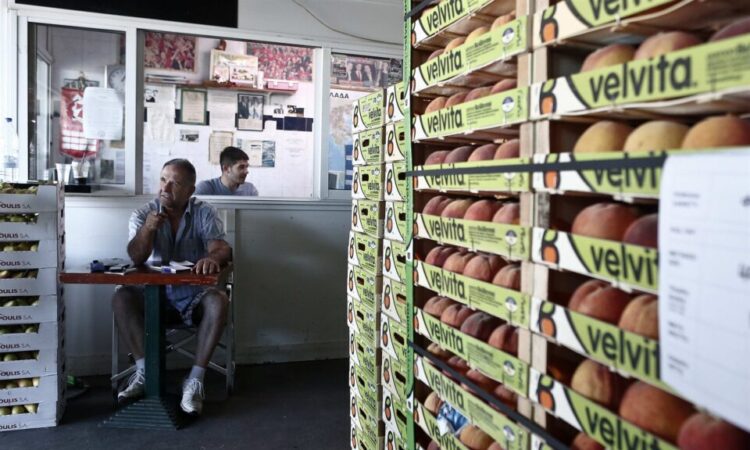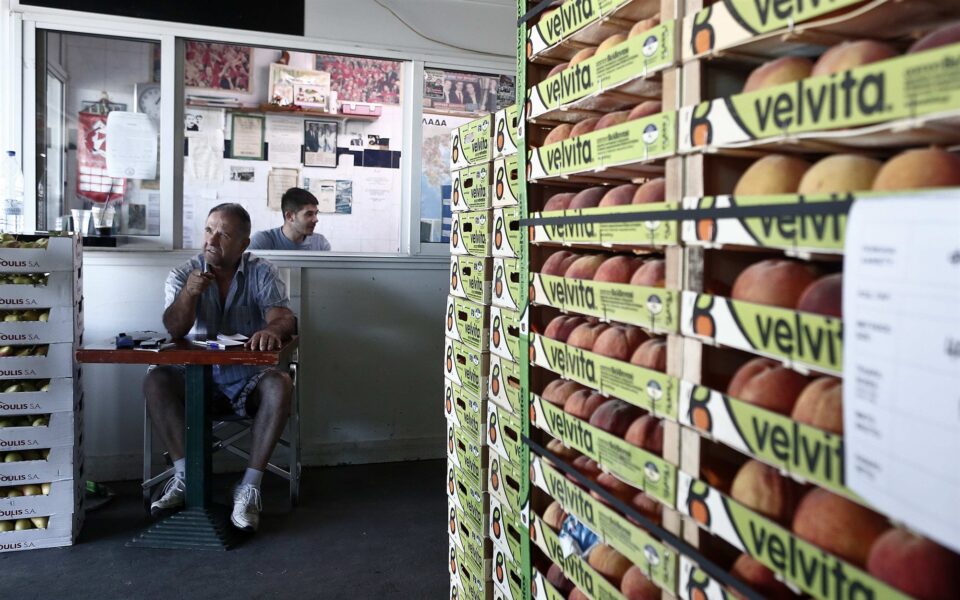

An employee sits next to crates of peaches at the central vegetable market in Athens. Thanks to programs for enticing more young people into agriculture, it is estimated that some 100,000 became farmers since 2000. [Reuters]
The Common Agricultural Policy (CAP) has been the European Union’s key mechanism for pumping funds into agricultural production and keeping it competitive since 1962.
In the form it has had in the past few decades, it consists of the European Agricultural Guarantee Fund (EAGF) – the so-called “first pillar” – which provides income support for the bloc’s farmers, and the European Agricultural Fund for Rural Development (EAFRD) – the “second pillar” – which concerns structural reforms aimed at improving the primary sector’s competitiveness, reducing the environmental impact of agricultural activities and rural development.
At the EU level, but in Greece too, the first pillar absorbs 75% of CAP resources and the second the remaining 25%. In this country, 16.6 billion euros has been invested in agricultural development programs between 2000 and 2020. The question is: Has this money been put to good use or has it simply been spent to cover consumer needs?
More specifically, has Greek agriculture’s competitiveness improved and to what degree? Has the environment been protected? Have inequalities between urban and rural areas been reduced?
Thanks to programs for enticing more young people (under the age of 40) into agriculture, it is estimated that some 100,000 young men and women became farmers from 2000 to the present. This is regarded as one of the most important structural interventions. Even though these programs did not accomplish as much as they could have done, they have brought a satisfactory number of young people into the sector and somewhat improved its demographic profile in terms of age.
In contrast, initiatives aimed at bolstering training, professional orientation, consultancy services, exchanges of know-how and innovation either never got off the ground or ended up constituting 1% of spending thanks to modifications in the programs.
Αgricultural development programs have helped modernize the sector but not to a degree that would limit dependence on income support and subsidies
Investments in agricultural operations and processing businesses throughout the 25-year period did not exceed 1 billion euros (public expenditure), benefiting about 30,000 agricultural operations and approximately 1,000 primary processing businesses. That accounts for 3% of agricultural businesses in this country, meaning a minimal contribution to the objective of overhauling the sector.
Income support for farmers in very rural mountain communities and in other areas that are not favorable for farming absorbs 32-25% of resources in the second pillar and is crucial to the continuity of agricultural activity in these areas, with the farming of sheep and goats benefiting the most.
Another 25-30% of resources goes toward environmental protection, with organic crops and livestock farming taking the lion’s share, though this has not resulted in a reduction in shelf prices or supply for consumers.
In short, agricultural development programs have helped modernize the sector but not to a degree that would limit dependence on income support and subsidies.
Dimitris Lianos is a project manager in the agricultural sector and a member of Greece’s strategic planning team for the EU Common Agricultural Policy.






